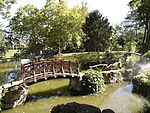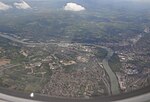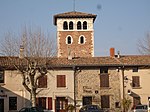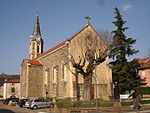Givors canal

The Givors canal (French: Canal de Givors) was built between 1761 and 1781 to carry coal, other goods and passengers from Rive-de-Gier to Givors on the Rhône, running beside the river Gier. The canal was approved in 1760 and after many problems opened in 1780. The canal was originally 15 kilometres (9.3 mi) long. Goods were loaded on flat barges that could carry several tons. It took about 18 hours for two or three men to pull a barge through the canal. The Givors canal played an important role in the early industrialization of Givors and the Gier valley, and became highly profitable. At its peak, in 1827, the canal transported 332,000 tons. The canal became obsolete when the Saint-Étienne–Lyon railway, the first passenger railway in France, was built in 1828–33 along the same route. In an attempt to compete, in 1839 the canal was extended to 20 kilometres (12 mi) long, with 42 locks to raise or lower boats moving between the sections of level water. Despite the extension, traffic volumes slumped, although the canal was kept open until the start of the 20th century. Little now remains of the canal, which has mostly been covered by the A47 autoroute between Givors and Saint-Étienne.
Excerpt from the Wikipedia article Givors canal (License: CC BY-SA 3.0, Authors, Images).Givors canal
Place du Bassin, Lyon
Geographical coordinates (GPS) Address Nearby Places Show on map
Geographical coordinates (GPS)
| Latitude | Longitude |
|---|---|
| N 45.590115 ° | E 4.775103 ° |
Address
Place du Bassin
Place du Bassin
69700 Lyon
Auvergne-Rhône-Alpes, France
Open on Google Maps








